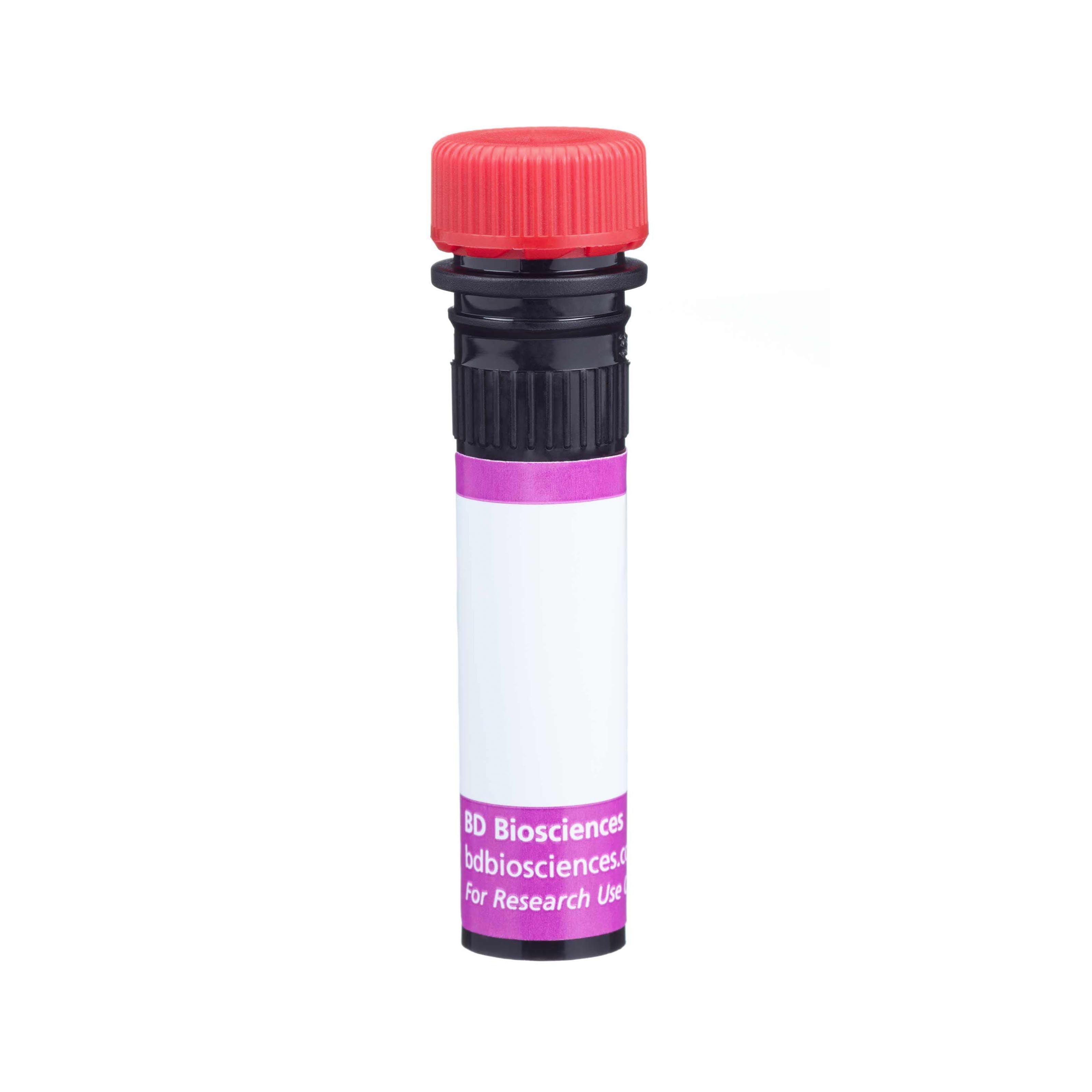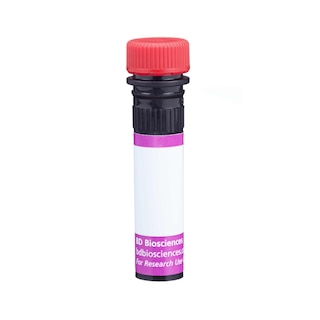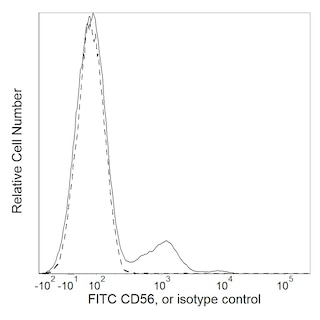-
Your selected country is
Middle East / Africa
- Change country/language
Old Browser
This page has been recently translated and is available in French now.
Looks like you're visiting us from {countryName}.
Would you like to stay on the current country site or be switched to your country?




Two-color flow cytometric analysis of CD337 (NKp30) expression on human peripheral blood lymphocytes. Human whole blood was stained with FITC Mouse Anti-Human CD56 antibody (Cat. No. 562794) and either BD Horizon™ BV711 Mouse IgG1, κ Isotype Control (Cat. No. 563044; Left Panel) or BD Horizon™ BV711 Mouse Anti-Human CD337 (NKp30) antibody (Cat. No. 563383; Right Panel). Erythrocytes were lysed using BD Pharm Lyse™ Lysing Buffer (Cat. No. 555899). The two-color flow cytometric dot plots show the correlated expression patterns of CD56 versus CD337 (NKp30) (or Ig Isotype control staining) for gated events with the forward and side light-scatter characteristics of viable lymphocytes. Flow cytometric analysis was performed using a BD™ LSR II Flow Cytometer System.


BD Horizon™ BV711 Mouse Anti-Human CD337 (NKp30)

Regulatory Status Legend
Any use of products other than the permitted use without the express written authorization of Becton, Dickinson and Company is strictly prohibited.
Preparation And Storage
Product Notices
- This reagent has been pre-diluted for use at the recommended Volume per Test. We typically use 1 × 10^6 cells in a 100-µl experimental sample (a test).
- Source of all serum proteins is from USDA inspected abattoirs located in the United States.
- An isotype control should be used at the same concentration as the antibody of interest.
- Please refer to www.bdbiosciences.com/us/s/resources for technical protocols.
- Alexa Fluor® is a registered trademark of Molecular Probes, Inc., Eugene, OR.
- Caution: Sodium azide yields highly toxic hydrazoic acid under acidic conditions. Dilute azide compounds in running water before discarding to avoid accumulation of potentially explosive deposits in plumbing.
- For fluorochrome spectra and suitable instrument settings, please refer to our Multicolor Flow Cytometry web page at www.bdbiosciences.com/colors.
- Cy is a trademark of Amersham Biosciences Limited.
- Brilliant Violet™ 711 is a trademark of Sirigen.
Companion Products





The p30-15 monoclonal antibody specifically binds to CD337, also known as NKp30, a receptor found on the surface of natural killer (NK) cells. NK cells are large lymphoid cells discovered because of their ability to recognize and kill abnormal cells such as tumor and virally infected cells. NK cell immune responses are regulated by a balance of activating and inhibitory signals generated by cell surface receptors. Inhibitory receptors recognize MHC class I molecules on normal cells producing a negative signal to the NK cell. Loss of MHC class I expression in infected or transformed cells results in the loss of this negative signal leading to NK cell activation. In concert with the loss of inhibitory signals, activation signals via NK receptors such as NKp30, NKp44, NKp46, NKG2D, and NKp80 mediate the activation of NK cells. NKp30 cooperates with NKp46 and/or NKp44 in the induction of NK cell-mediated cytotoxicity against the majority of target cells.
The antibody was conjugated to BD Horizon™ BV711 which is part of the BD Horizon™ Brilliant Violet™ family of dyes. This dye is a tandem fluorochrome of BD Horizon™ BV421 with an Ex Max of 405-nm and an acceptor dye with an Em Max at 711-nm. BD Horizon™ BV711 can be excited by the violet laser and detected in a filter used to detect Cy™5.5 / Alexa Fluor® 700-like dyes (eg, 712/20-nm filter). Due to the excitation and emission characteristics of the acceptor dye, there may be moderate spillover into the Alexa Fluor® 700 and PerCP-Cy™5.5 detectors. However, the spillover can be corrected through compensation as with any other dye combination.

Development References (5)
-
Augugliaro R, Parolini S, Castriconi , et al. Selective cross-talk among natural cytotoxicity receptors in human natural killer cells. Eur J Immunol. 2003; 33(5):1235-1241. (Biology). View Reference
-
Byrd A, Hoffmann SC, Jarahian M, Momburg F, Watzl C. Expression analysis of the ligands for the Natural Killer cell receptors NKp30 and NKp44. PLoS ONE. 2007; 2(12):e1339. (Immunogen: Blocking, ELISA, Flow cytometry). View Reference
-
Flaig RM, Stark S, Watzl C. Cutting edge: NTB-A activates NK cells via homophilic interaction. J Immunol. 2004; 172(11):6524-6527. (Biology). View Reference
-
Pende D, Parolini S, Pessino A, et al. Identification and molecular characterization of NKp30, a novel triggering receptor involved in natural cytotoxicity mediated by human natural killer cells. J Exp Med. 1999; 190(10):1505-1516. (Biology). View Reference
-
Stark S, Flaig RM, Sandusky M, Watzl C. The use of trimeric isoleucine-zipper fusion proteins to study surface-receptor-ligand interactions in natural killer cells. J Immunol Methods. 2004; 296(1-2):149-158. (Biology). View Reference
Please refer to Support Documents for Quality Certificates
Global - Refer to manufacturer's instructions for use and related User Manuals and Technical data sheets before using this products as described
Comparisons, where applicable, are made against older BD Technology, manual methods or are general performance claims. Comparisons are not made against non-BD technologies, unless otherwise noted.
For Research Use Only. Not for use in diagnostic or therapeutic procedures.
Report a Site Issue
This form is intended to help us improve our website experience. For other support, please visit our Contact Us page.